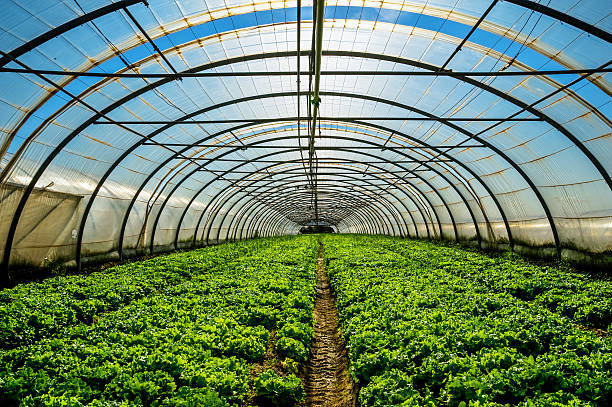The Future of Greenhouses: Technologies in Sustainable Agriculture
Are you interested concerning the future of greenhouses and how they are reinventing lasting farming? From innovative environment control systems to vertical farming techniques, water-efficient irrigation methods, sustainable power combination, and clever information analytics, these innovations are transforming the way we grow our food.
Advanced Climate Control Systems
To accomplish optimum expanding problems, you can count on the innovations in greenhouses with advanced climate control systems. These systems have reinvented the means we grow crops, supplying a regulated atmosphere that is favorable to plant development. With these innovative systems, you can currently manipulate temperature level, moisture, light levels, and even CO2 focus to develop the best problems for your plants to grow.
One of the vital functions of these advanced climate control systems is their ability to regulate temperature level. By utilizing sensing units and automated controls, the greenhouse can change the temperature based upon the certain requirements of the plants. This guarantees that they are never revealed to severe heat or cool, which can be destructive to their development.
Humidity control is another crucial facet of these systems. By preserving the optimal humidity levels, you can prevent problems such as mold, mold, and illness from affecting your plants. These systems can also manage the amount of light that gets to the plants, making sure that they get the optimal amount for photosynthesis.
Furthermore, progressed climate control systems can also control CO2 focus. By increasing the degrees of carbon dioxide in the greenhouse, you can improve plant growth and performance. This is particularly beneficial in areas with reduced natural CO2 degrees.
Vertical Farming Techniques
One essential upright farming method is utilizing piled expanding systems. Monarch Greenhouse Utah. These systems entail organizing plants in numerous layers, vertically stacked on top of each other. By making use of upright area, farmers can optimize their plant return without calling for additional land. Stacked growing systems are frequently made use of in urban areas where space is limited.
One prominent approach is called vertical hydroponics, where plants are grown in nutrient-rich water without dirt. This method is very efficient as it lowers water use by up to 90% compared to standard farming techniques. In addition, since the plants are grown inside, they are safeguarded from insects and conditions, decreasing the requirement for chemicals.
One more method is aeroponics, which includes suspending the plant roots in a mist or air setting. This approach permits ideal nutrient absorption and oxygenation, causing faster growth and greater yields. Aeroponics likewise utilizes much less water than typical farming and can be carried out in vertical systems, making it a prominent choice for vertical farming.
Water-efficient Watering Techniques
When it comes to carrying out water-efficient irrigation approaches in sustainable farming,Optimizing water conservation is essential. With international water scarcity coming to be a pressing concern, it is vital to create ingenious techniques that enhance water use in greenhouse operations.
One encouraging method is drip watering, which supplies water directly to the plant origins, minimizing waste and evaporation. By making use of a network of tubes with small emitters, water is used gradually and precisely, making certain that plants receive the needed moisture without excess overflow.
An additional effective technique is using dirt dampness sensors. These gadgets determine the dampness content in the dirt and supply real-time information to farmers. By keeping an eye on the dirt's wetness degrees, farmers can accurately determine when and just how much water to use, preventing over-irrigation.
Additionally, the execution of rainwater harvesting systems is getting popularity in greenhouse agriculture. Accumulating rainwater from rooftops and keeping it in containers allows farmers to utilize this all-natural source for irrigation functions, lowering reliance on conventional water resources.
Last but not least, the adoption of automated irrigation systems can dramatically improve water efficiency. These systems utilize sensing units to detect soil wetness degrees and weather, adjusting irrigation routines as necessary. By optimizing water usage based on actual plant requirements, these systems can lower water waste and promote sustainable farming practices.
Renewable Resource Combination
Sustainable power integration in greenhouses uses numerous benefits, including lowered operating expenses and lowered dependence on non-renewable energy sources. The created power can after that be used to run different procedures within the greenhouse, such as heating, illumination, and air flow systems. These turbines harness wind power and convert it into electricity, which can be utilized to supplement the power demands of the greenhouse.
Smart Information Analytics and Automation
To boost the effectiveness of your greenhouse operations and optimize source use, take into consideration applying smart information analytics and important source automation. Smart information analytics includes gathering and examining data from numerous sensing units and gadgets within your greenhouse.
This can include automating the control of lighting, air flow, watering systems, and nutrient delivery. By automating these procedures, you can ensure that your plants get the appropriate conditions and nutrients at the ideal time, without click for source the demand for continuous hands-on treatment.
In addition, smart information analytics and automation can collaborate synergistically. The data collected by sensors can be made use of to notify automated systems, enabling them to make real-time changes based upon the current problems. This integration of information analytics and automation can cause more accurate and efficient source allocation, eventually leading to greater returns and far better plant top quality.
Verdict
In verdict, the future of greenhouses in lasting agriculture looks encouraging. With innovative environment control systems, vertical farming strategies, water-efficient watering methods, and sustainable energy assimilation, greenhouses are ending up being much more eco pleasant and efficient.

By maximizing water usage based on actual plant requirements, you could try this out these systems can reduce water waste and promote sustainable farming methods.
